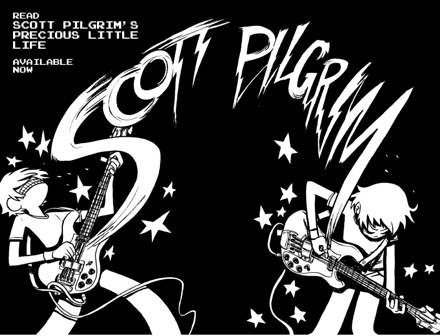Riccardo Burchielli's art gets on my nerves.
Sometimes he has lumps in the wrong
 places and a good quarter of the time when a panel has a lot of the elements that should make for excellently dramatic imagery it either has something it shouldn't or doesn't have something it should. [See what I mean, from page 4, at right?] I wanted to get that out first. That's the main reason I haven't yet given a solid chance to Brian Wood's long-running project with Burchielli, "DMZ". It's far from bad, but it is frustrating. With all of that out of the way let's talk about the first part of the new "Northlanders" story-arc which Wood (@brianwood) wrote and Burchielli drew. I was looking forward to this and...
places and a good quarter of the time when a panel has a lot of the elements that should make for excellently dramatic imagery it either has something it shouldn't or doesn't have something it should. [See what I mean, from page 4, at right?] I wanted to get that out first. That's the main reason I haven't yet given a solid chance to Brian Wood's long-running project with Burchielli, "DMZ". It's far from bad, but it is frustrating. With all of that out of the way let's talk about the first part of the new "Northlanders" story-arc which Wood (@brianwood) wrote and Burchielli drew. I was looking forward to this and...It's awesome. METAL awesome.
When I was a kid, my second favourite class was always history. I always thought about it as one big story with a whole lot of different characters and groups of characters who clashed and reconciled and clashed again and grew and changed and occasionally died out. Always-always-ALWAYS with something else taking their place. History was my second favourite class only because English class was about how stories themselves worked. Plus fiction always wins over non-fiction. It's more versatile. It's cooler.
I think history was Brian Wood's second favourite subject too because "METAL" Part 1: "The Old Ways" is as much about Vikings ramming people through with sharp weapons as it is about the friction of societal transition between different cultural belief systems. And it's cool.
 First, we meet the blacksmith Erik. Erik Thorsson that is. Simultaneously, we meet Ulf. (Yes, U-L-F.) Then we meet the goddess Hulda. This is followed by a group of unnamed obnoxious monks and nuns. And finally, the beautiful Ingrid. The names, the ethnicities, the worship, the social status-- in short the History (the long, long STORY) of who these people are is far from incidental. [It's on display, in these simple two panels in which Ulf lets Erik go by slipping him the key to his shackles, also from page 4.]
First, we meet the blacksmith Erik. Erik Thorsson that is. Simultaneously, we meet Ulf. (Yes, U-L-F.) Then we meet the goddess Hulda. This is followed by a group of unnamed obnoxious monks and nuns. And finally, the beautiful Ingrid. The names, the ethnicities, the worship, the social status-- in short the History (the long, long STORY) of who these people are is far from incidental. [It's on display, in these simple two panels in which Ulf lets Erik go by slipping him the key to his shackles, also from page 4.]The design of each of these characters is human and expressive. Who they are and what they feel is intelligently written on their faces and into their clothes by Burchielli. There's even some beautifully laid-out pages in here if the visual art is a bit off.
 ["This is the future... stay out of its way." This image of the cathedral under construction dominating the small village landscape is all kinds of excellent. Not a line out of place here on the splash-page facing the previous images!]
["This is the future... stay out of its way." This image of the cathedral under construction dominating the small village landscape is all kinds of excellent. Not a line out of place here on the splash-page facing the previous images!]Societies twist and change, sometimes because of pressures from without and sometimes because of pressures from within, sometimes for the better and sometimes for the worse. Erik and Ulf live in a society of Vikings being coerced into destroying their own land to build a cathedral for the disrespectful, money-loving monks. Ulf is an unhappy but willing collaborator to their machinations because he sees the huge amount of money flowing into their village as a boon not to be passed on. Erik sees the influence of the Christians as an unacceptable outside control of his home. He chooses, at the behest of the mysterious and terrifying Hulda (goddess of death?), not to give in. To choose the destruction of his home over the destruction of his beliefs. Ingrid is the kidnapped Viking woman he liberates in his violent rampage.
Wood's pacing of this entire issue leading up to, and including, the attack sequence is nothing short of remarkable. The comic-book industry standard 22 pages somehow feel more like 15 because the trajectory is so breathless. The content is mostly set-up, but WHAT set-up! This set-up is so good it completely overcomes my dislike for the art.
Dear gods. Where can we go from here?
I don't know and I can't wait to find out. You shouldn't be able to either.
~ @JonGorga





